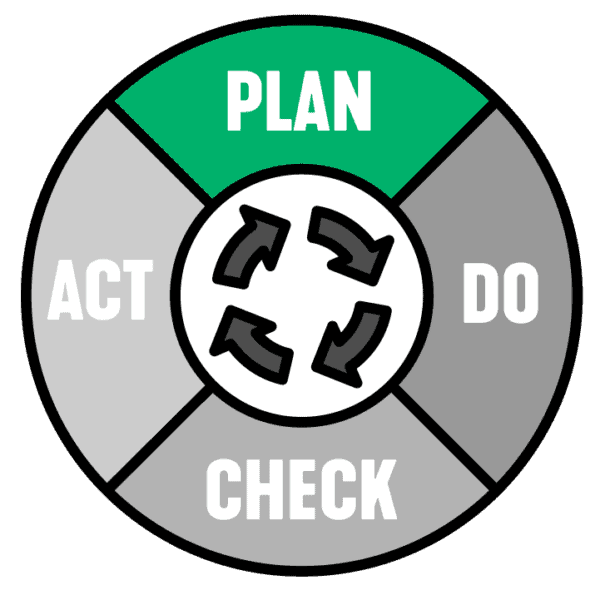What are the most common Agile failures?
As an Agile coach, with years of all too frequent failures and a wholly unscientific research method, I’ve learned the road to Agile nirvana is strewn with potential problems. Here are my Top Ten Agile Failures and How to Avoid Them. By the way, with your Agile Mindset, you’ll accept that these are learning opportunities.
10. People not buying into the Agile approach
Often people don’t get on the Agile bus because they don’t know where it’s going. Lack of purpose and understanding are Change killers.
Why are we doing this? Whoah, this takes so much longer! We were happy working the way we used to – why did you ruin everything?! I hate you!
Change needs to be carefully planned and considered. It is crucial senior people make it clear why Agile is happening and adequate training and coaching are provided. You might need to make some changes within the team, but the worst-case scenario is when senior people are not buying in – then there is a bigger issue…
9. Business people are not available
Projects without business input are bad at the best of times, but for Agile it means slow and painful death. The oxygen of Agile is feedback and business representatives, e.g. a Scrum Product Owner, need to be available daily to explore requirements and to test and review the evolving solution.
Senior people need to make this happen upfront – before development. Ideally, roles will be back-filled to free people for around 50% of their time. Any more and they risk losing connection with the business area. Failing this, where availability is very restricted, a schedule should be agreed beforehand:
- Daily Stand-up (15 minutes)
- 30 each morning in-person/on phone for questions (20 minutes)
- 2-3 days every 2 weeks for Sprint/Timebox events (Kick-off, Closeout, Reviews)
8. No Clear Business Goal
A business goal is a beacon a team uses to steer itself through times of uncertainty. Moreover, Agile teams set a goal for every Timebox/Sprint that moves them closer to the overall goal. One study showed that setting written, visible goals and reporting progress leads to over 70% achievement rate on average1. Sprint goal and review anyone?
Again, senior people need to convey their intent with a very clear, simple and visible statement. In the US Army, this is known as the Commander’s Intent’. It defines the end game but leaves the method and solution open to the empowered team to decide – see below.
7. Detailed Upfront Requirements Analysis and Design
No, no, no – just don’t. Agile frameworks are vehicles for learning and detail emerges as development progress. Too much upfront analysis invariably means assumptions about what is required. The consequence is Agile failures such as unwanted feature development and typically frenetic rework after testing to get something out the door.
In Agile detailed analysis and design happen just before an increment is built. Practices, such as User Stories, facilitated workshops, visual modelling and prototypes enhance communication. The 3C’s are useful to illustrate this:
- Card – that the user story is written on and the one now being actively worked on
- Conversation – between the business representative, developer and perhaps a business analyst
- Confirmation – of the product increment by review and more importantly by defined user acceptance testing
6. Failure to Embrace Change is Failure to Embrace Agile
If a change comes along then give it a big hug and tell it you love it, as it is your best friend ever. Agile thinking accepts that change happens and development activities need to respond to deliver the right solution. No matter how shiny your plan, or kick-arse a PM you are, a project is a means to an end and not the end in its self. Running a perfect project and not delivering an appropriate solution is a failure – check out my post here.
5. The Team are Not Empowered
It is all about the people, people. Tools and buzzwords do not an Agile make. More than anything Agile is about people and teamwork. Performing Agile teams accept group responsibility and are empowered to make day-to-day decisions, about the evolving solution, with respect to scope and the business goal.
Senior people need to let go and adopt more of a coaching, asking mentality over a telling one. Business and technical collaboration can improve throughput as decisions are made without time-wasting escalations to ask permission. For more great insights on this topic check out Daniel H. Pink’s website and books – in particular, Drive: The Surprising Truth About What Motivates Us.
4. Under-Performing People
Introducing Agile is not a silver bullet to resolve issues from under-performing people and the subsequent Agile failures. Agile introduces practices that make activities very transparent to all. People underperform for many reasons and the fact is some do not like working in such an open way.
However, as a performance management tool, Timeboxes/Sprint are great for having short-term objectives in place to develop people. I have seen supposed under-performers blossom, as they receive frequent, positive feedback and enjoy the small victories that come from incremental delivery.
3. Technical People Allocated to Multiple Projects
Your people aren’t butter, so don’t spread them too thin. Ideally, technical teams are allocated to one or maybe two projects. It is all too common for organizations not to prioritize projects, run many in parallel and deliver struggle to deliver.
For Agile projects to work effectively teams need room to collaborate and respond to change and get the solution right. As counter-intuitive as this might sound in the longer term unnecessary development time and technical debt are minimized.
2. No Integrated Testing or Reviews
An Agile project without integrated testing is like a day without sunshine. It’s just not Agile – it’s just a series of mini waterfall projects. Early and frequent feedback, from review and testing, enables a team to understand what is right and what needs to change.
Integrated testing is contingent on incremental delivery – it’s also good for the soul and can energize sleepy teams and build trust with stakeholders.
1. Poor Support from Senior People
Sir Alex Ferguson, the most successful manager in the history of English football, summed up high-pressure situations as, ‘squeaky bum time’. The absence of support and buy-in from your senior people is as squeaky bum time as it gets.
In my view lack of support from people in leadership roles is the biggest cause of most Agile failures. Fixing the other issues listed is reliant on senior support and action. Without effective vision or sponsorship, it is likely that we are all doomed. If you can’t get this fixed it will likely fall to you to step in – have you got the influence and time to assume this role and workload?
Best to agree, in advance, a communication plan and key points of involvement, i.e. Sprint/Timebox closure meetings, with senior types.
1 Gail Matthews, Professor, Dominican University of California, USA. The Effectiveness of Four Coaching Techniques in Enhancing Goal Achievement: Writing Goals, Formulating Action Steps, Making a Commitment, and Accountability.



